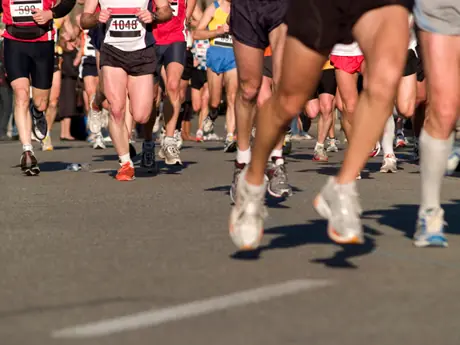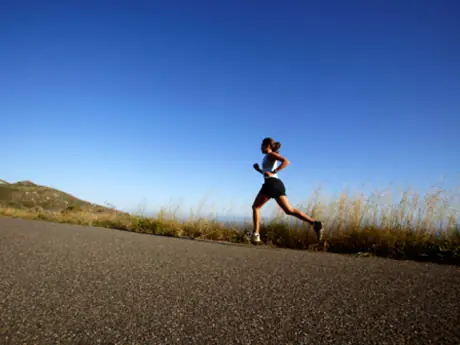Managing your suffering
At the University of Colorado, Clint Wells was a four-time all-American in the 3K steeplechase. He transitioned to 5K and 10K road races after graduating and eventually debuted in the marathon at age 36.Now 41, he is among the sport’s elite. He is the only person to win a masters title at two Abbott World Marathon Majors this year: Boston (2:24:55) and Chicago (2:24:10).
But for Wells, continuing to run world-class times has been difficult as he’s aged. While the speed and volume of his training miles haven’t changed in 20 years, the difference comes when he reaches deeper.
“I feel like I’m putting forth the same effort, but the results are a little bit behind as I get older,” he says. “I [once] would do a set of mile repeats at 4:25-4:40, and now it’s more like 4:40-5:00 with that same effort. The races and VO2-max stuff have fallen a few steps back. I can’t mimic the same high intensity I used to.”
That’s why Wells believes his days of PRs in shorter races are behind him, even if he focused on just that. “Even if I became a full-time athlete now, and had the same coach and same training program I did when I was younger, my age would be a limitation in terms of getting back to where I was.”
So he has set new standards for himself, what he calls his “post-36 PRs.” He goes into every race hoping to challenge his best time since turning 36.
“The people who can sustain their excellence are those who can manage their suffering better.”
Kathy Martin, the 5K champ, has a similar strategy. She knows she’s unlikely to run as fast as she could have years ago, so she sets her sights on being as fast as she can right now. Which, of course, is faster than anyone else in the world her age.
“I focus on world records,” she says. “And I want to do this forever, as long as I can keep training and feel well. I think that we’re such role models for the younger generation. It’s about fitness for life. You don’t have to be competitive forever, but it’s not short term either, not just something you do in 20s.”
Wells and Martin are examples of the need to change how you run as you age. You need new goals, yes, but you also need new ways of thinking about performance and aging. For example, Martin now pays more attention to hydration, nutrition and getting sufficient sleep than she did as a younger athlete. She also races less frequently while “still training right at the edge and pushing the envelope.” Wells, too, has learned to back off at times, including taking extra rest days here and there, to help his body heal from difficult runs. And Andrews has added natural supplements to his diet and does more workouts focused on back and hip strength.
“I have to work harder now than I did 20 years ago to prepare myself as a runner,” Andrews says. “In 1998, I set a record for most 100-mile races run in a year. I did 12 of them, and I never trained between races. I just ran them, then took a break, then ran the next. There’s no way I could do that now. If I go two weeks without running, my body falls apart and it’s really hard to get back. The older you get, the more diligent you have to be. So keep running. It’s so easy to fall out, and so hard to build yourself back up.”
Which is good advice.
As Joyner says: “The people who can sustain their excellence are those who can manage their suffering better.”
Slowing down the slowing down
Satchel Paige is an icon for aging athletes. A baseball pitcher, he didn’t appear in a Major League game until he was 41 and didn’t retire until he was 58. And his tongue was as wicked as his fastball. When asked about playing so well so late in life, he’d quip: “Well, how old would you be if you didn’t know how old you were?”
It’s a good mantra for aging runners, like Martin, who still race against the odds and Father Time.
“I’ve never been 65 before, so I don’t know what it’s like to be 65,” she says. “All I know is that I’m in good shape, I feel good, and I love what I do. … Your age doesn’t rule what you can do. All we’re trying to do is slow down the slowing-down process.”
Proving that aging is the only thing she does slowly.
Connect with us on Twitter, Facebook, Instagram or Pinterest for more tips, recipes and ideas to fuel your ACTIVE life.
 Find your next race.
Find your next race.
- 4
- of
- 4
Get ACTIVE on the Go


Couch to 5K®
The best way to get new runners off the couch and across the finish line of their first 5K.
Available for iOS | Android







Discuss This Article